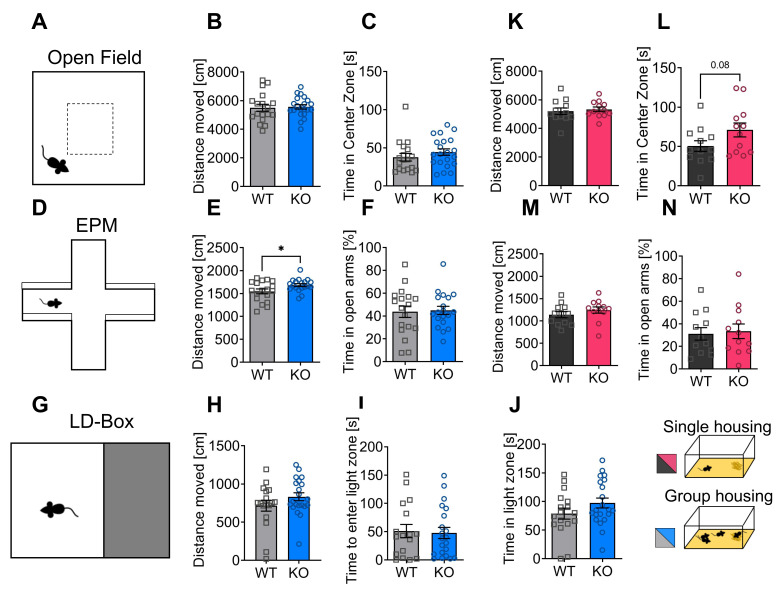Figure 2.
Depletion of p62 does not result in increased anxiety. (A) Illustration of the open field arena and the center zone (20 cm × 20 cm). (B) Both genotypes moved an equal distance in the open field arena. (C) The time p62 KO and WT mice spent in the center was similar. (D) Schematic view of elevated plus maze. (E) p62 KO mice moved a significantly longer distance in the elevated plus maze compared to WT mice. (F) The time spent in the open arms of the elevated plus maze was almost identical. (G) Schematic illustration of the light–dark box test. (H) Distance moved in the light zone of the arena was similar in WT and KO mice. (I) Time mice needed to re-enter the light arena was almost identical. (J) The time mice spent in the light arena was comparable. (K) WT and p62 KO mice moved a comparable distance in the open field. (L) p62 KO mice spent slightly more time in the center of the open field than their WT littermates. (M) WT and p62 KO mice moved a comparable distance in the elevated plus maze. (N) Time spent in the open arms of the elevated plus maze was comparable between genotypes. * p < 0.05 (unpaired t-test). Squares and circles represent single replicates. All error bars represent ± SEM. Group 1 (B-J group housing, blue): 3–4 months old, male; WT = 12, KO = 12. Group 2 (K-N single housing, red): 7 months, male: WT N = 18, KO N = 21. EPM, elevated plus maze; LD-Box, light–dark box.

